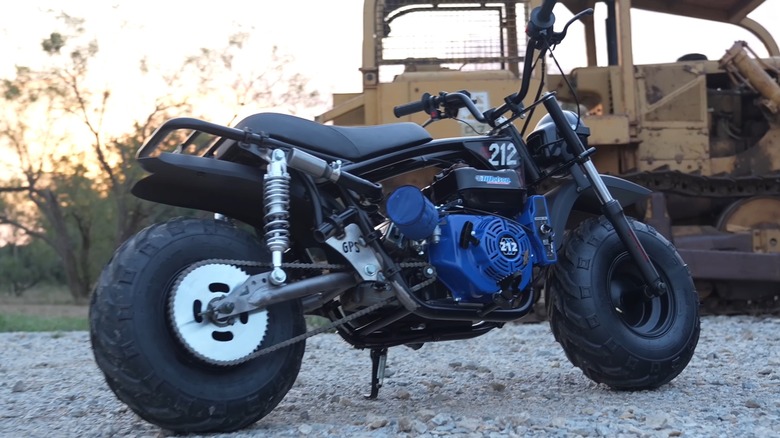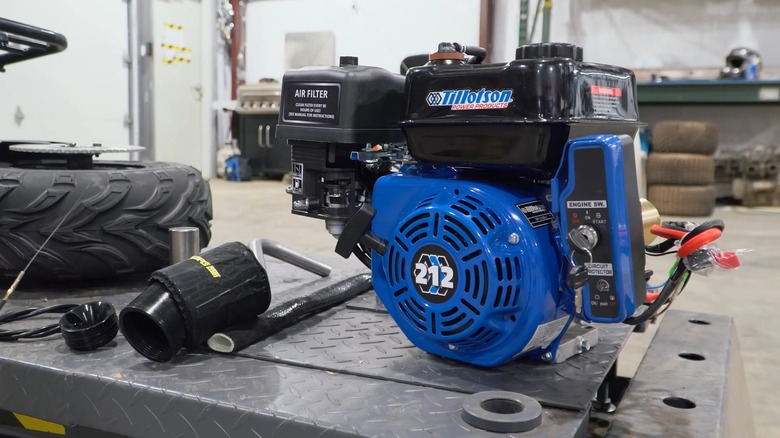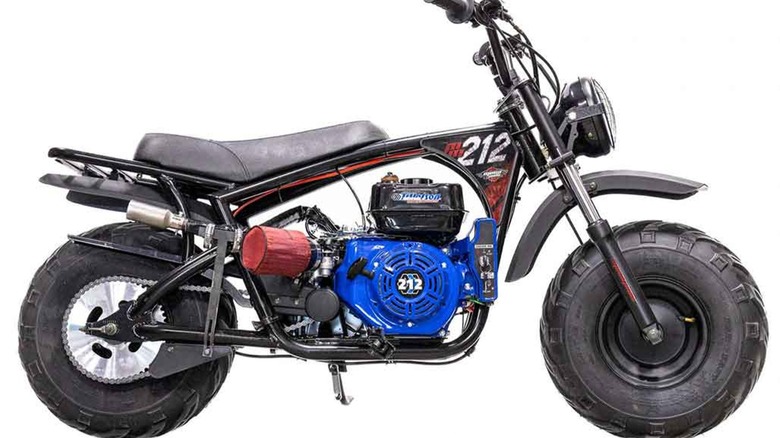Why The Mega Moto 212 Is Still One Of The Most Mentioned Mini Bikes In The Community
Mini bike building is a growing community. Just take a look at the Redditor who made a mini bike using just Harbor Freight tools. Thene there's the Mega Moto 212, which has been an industry mainstay. For the newcomers, it's whether to buy it; for tinkerers, it's whether it will accept a bigger engine; and for the experienced builders, it's a matter of comparing its frame and components to boutique kits. All of these questions point to one thing: the Mega Moto 212 sits squarely at the intersection of accessibility and modification, which is the exact place where online mini-bike communities love to hang out.
The reason for this is simple. First, the kit format makes it inherently worthy of discussion as a complete kit invites questions about build choices, like whether to swap engines or upgrade the clutch/torque converter. Everyone wants a guide to motorcycle customization types, and when a product is sold as a kit, it becomes an ongoing project that will constantly generate commentary. This is especially true for riders who want a balance between doing the work themselves and getting a ready-to-ride outcome without paying premium boutique prices.
Speaking of prices, the 212 lands in a sweet spot on the price and features spectrum. It's a valuable upgrade on the 196 while being cheaper for value than the premium-priced 224. That itself creates a community of buyers who brag about the value, as well as those who explain the upgrades needed to get the performance they want.
What the Mega Moto 212 actually offers
The real-world performance and practical features of the Mega Moto 212 keep the talk from being purely hypothetical. As such, if community chatter is one-half of the explanation, the other half is the bike itself. The Mega Moto 212 is a full-size mini-bike kit built around a 212cc four-stroke engine platform. Depending on the exact model and seller, the package usually includes a steel frame, front and rear suspension, hydraulic braking, an automatic clutch/torque converter or a conventional centrifugal clutch, and a chain drive. This is everything to go from spare parts to street cruises with minimal extra shopping.
The kit approach means you can opt for the base Tillotson or Lifan 212 engine. Alternatively, you can swap in a Predator or any other aftermarket engine. You simply need to purchase the roller kit for about $740 and then mount your preferred engine. The full engine-inclusive kit comes in at about $1200.
The 212's modification options also mean performance numbers vary by setup, but community test rides and product specs give a realistic baseline expectation of between the mid-30s to around 50 mph for many built examples. The specific output will depend on gearing, CVT/torque converter tuning, and the rider's weight. With that range, it will be ideal for relaxed cruising, neighborhood runs, and mild trail work. These are practical uses for a rider who wants more than a basic machine but doesn't want full motorcycle complexity.
Build options and quality make the Mega Moto 212 endure in community memory
Build quality is another avenue by which the Mega Moto 212 remains one of the most mentioned mini bikes. It has a thicker frame than many cheap mini-bikes, and community builders agree that the frame tolerates swaps and upgrades without catastrophic flex. That matters when people begin to experiment with bigger engines or more aggressive gearing, as a flimsy frame kills a build just as easily as a stiffer one invites experimentation. The inclusion of hydraulic brakes on many 212 packages is another practical point, as it gives better stopping power that though not as flashy, improves safety and confidence.
The kit ecosystem also matters. Since the Mega Moto 212 is sold as a common, well-documented kit, its aftermarket parts, stage kits, and community knowledge are easy to find. GoPowerSports sells Stage 1 performance kits specifically for the 212, and builders routinely document which torque-converter or clutch sizes work best. That reduces the guesswork for new builders and gives advanced builders a clear upgrade path.


